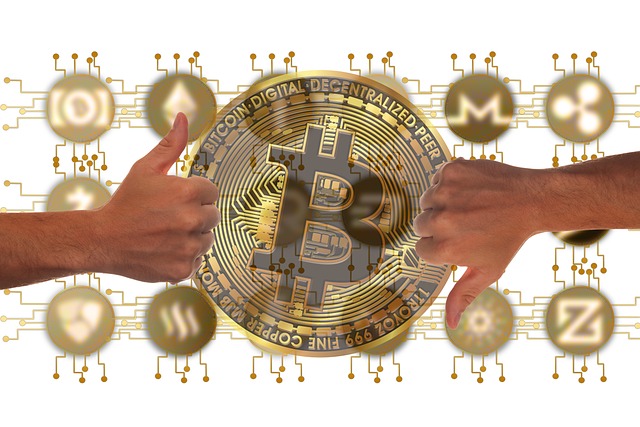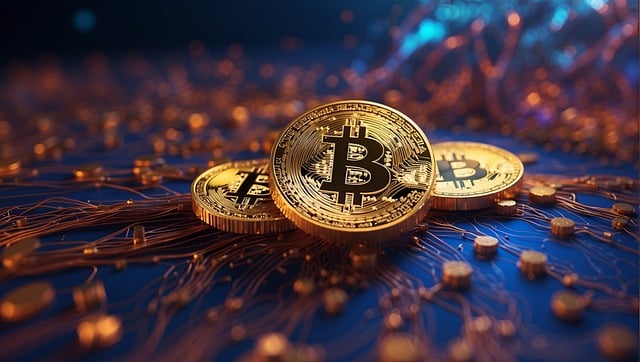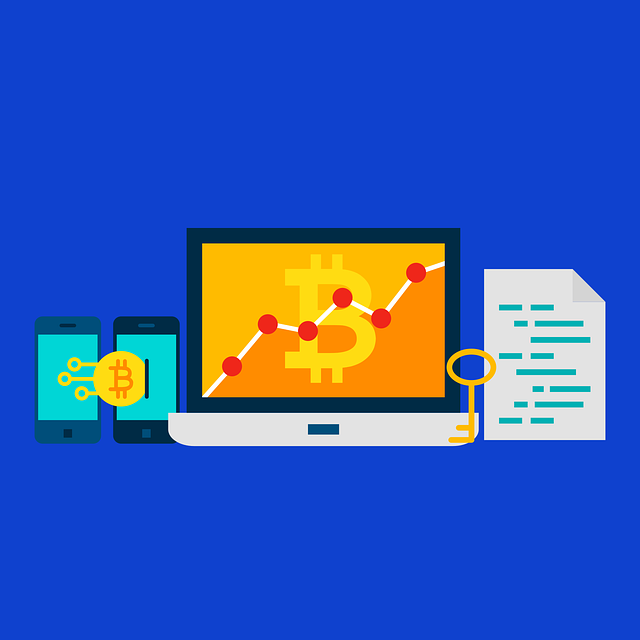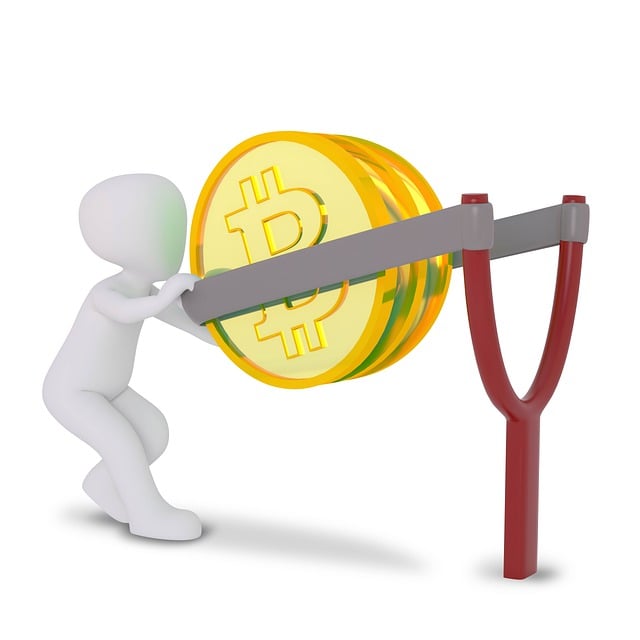Ripple (XRP) distinguishes itself from Bitcoin and Ethereum as a cryptocurrency focused on swift, low-cost cross-border money transfers. In the decentralized finance (DeFi) space, where lending protocols offer democratized credit access but face vulnerabilities and volatility, XRP aims to provide faster, more secure transactions. DeFi lending protocols revolutionize borrowing and lending by eliminating intermediaries, but they also introduce risks like smart contract vulnerabilities and market manipulation. XRP's unique capabilities in providing liquidity through instant, cheap transactions can enhance the efficiency of the DeFi ecosystem. Despite DeFi's challenges, XRP has shown resilience due to its stability and widespread adoption in cross-border payments, positioning it as a potential game-changer in both DeFi and international money transfers.
“The Ripple (XRP) coin has garnered significant attention in the cryptocurrency market due to its unique position within decentralized finance (DeFi). This article delves into the intricate relationship between XRP and DeFi, exploring the benefits and potential risks associated with DeFi lending protocols. We analyze how these protocols impact XRP’s value and assess its resilience amidst market challenges. By examining these factors, we provide insights into XRP’s future outlook, especially in mitigating the risks posed by rapidly evolving DeFi landscapes.”
- Understanding Ripple (XRP) and its Role in the Crypto Market
- DeFi Lending Protocols: Benefits and Potential Risks
- The Relationship Between XRP and Decentralized Finance (DeFi)
- How Do DeFi Lending Protocols Impact XRP Coin Value?
- Exploring XRP's Resilience Amidst DeFi Protocol Challenges
- Future Outlook: XRP, DeFi, and Mitigating Risks
Understanding Ripple (XRP) and its Role in the Crypto Market

Ripple, often abbreviated as XRP, is a digital currency that has gained significant attention in the cryptocurrency market. It was created with a unique purpose: to facilitate fast and efficient cross-border money transfers at low costs. Unlike many other cryptocurrencies, Ripple isn’t designed for use as a store of value or a medium of exchange like Bitcoin or Ethereum. Instead, it focuses on enabling seamless transactions between different currencies, making it an attractive option for financial institutions and international businesses.
In the complex world of decentralized finance (DeFi), where lending protocols are becoming increasingly popular, Ripple offers an alternative approach. These DeFi lending protocols aim to democratize credit and provide users with greater control over their funds. However, they also come with risks, such as smart contract vulnerabilities and market volatility. Ripple’s unique technology and use case position it as a potential game-changer in the DeFi space, offering faster and more secure transactions while mitigating some of the risks associated with traditional lending protocols.
DeFi Lending Protocols: Benefits and Potential Risks

Decentralized Finance (DeFi) lending protocols have emerged as a significant facet of the crypto ecosystem, offering users an innovative way to earn interest on their digital assets. These protocols allow individuals to participate in lending and borrowing activities without traditional intermediaries like banks. The benefits are numerous; for instance, users can access higher interest rates compared to conventional savings accounts, and transactions are typically faster and more efficient due to blockchain technology’s transparency and immutability. DeFi lending has democratized financial services, enabling folks from all walks of life to become lenders or borrowers with relative ease.
However, alongside the potential advantages, DeFi lending protocols and their risks cannot be overlooked. The decentralized nature of these platforms means that users bear a greater responsibility for securing their funds. Smart contract vulnerabilities and hacking attempts are significant concerns; if not properly addressed, they can lead to substantial financial losses. Additionally, regulatory uncertainty surrounding DeFi remains a challenge, as the fast-evolving nature of this space often lags behind traditional financial regulations, leaving investors susceptible to market volatility and potential legal implications.
The Relationship Between XRP and Decentralized Finance (DeFi)

XRP, the native cryptocurrency of Ripple, has found an intriguing intersection with Decentralized Finance (DeFi). As DeFi continues to gain traction, XRP’s role in this emerging landscape is worth exploring, especially regarding lending protocols and their associated risks. DeFi lending protocols have revolutionized borrowing and lending by removing intermediaries, but they come with inherent challenges. XRP’s potential contribution lies in providing liquidity to these protocols, offering faster, cheaper cross-border transactions that can enhance the overall efficiency of DeFi ecosystems.
By facilitating seamless transfers, XRP can mitigate some of the risks associated with DeFi lending, such as counterparty risk and volatility. Its built-in features for secure, instant payments could attract users seeking reliable and efficient ways to participate in DeFi. This symbiotic relationship has the potential to drive adoption and expand the use cases for both XRP and decentralized finance, creating a more robust and accessible financial network.
How Do DeFi Lending Protocols Impact XRP Coin Value?

The integration of DeFi (Decentralized Finance) lending protocols has significantly influenced the Ripple XRP coin’s market dynamics. These protocols allow users to borrow and lend cryptocurrencies, including XRP, with minimal intermediaries. This increased liquidity can boost XRP’s value by facilitating easier trading and fostering a more active market. However, it’s crucial to consider the risks associated with DeFi lending protocols. They often operate on smart contracts, which, despite their transparency, can harbor vulnerabilities leading to potential losses for investors if not carefully managed or audited.
The decentralized nature of DeFi also means that there’s no central authority to manage risk or provide insurance against smart contract failures or market volatility. As a result, XRP coin values in DeFi lending protocols can be more susceptible to rapid fluctuations. Therefore, while DeFi lending can drive up XRP value by expanding its utility and accessibility, it also introduces new risks that investors must understand and mitigate.
Exploring XRP's Resilience Amidst DeFi Protocol Challenges

Despite the recent challenges faced by decentralized finance (DeFi) lending protocols, XRP (XRP) has demonstrated remarkable resilience. DeFi lending platforms have been under scrutiny due to their inherent risks, including high volatility and smart contract vulnerabilities. However, XRP’s stability and widespread adoption in cross-border payments offer a contrasting narrative.
The coin’s value is less susceptible to the daily fluctuations often seen in the DeFi market. This stability is a result of its underlying technology, Ripple, which focuses on ensuring fast and low-cost transactions globally. As DeFi protocols continue to evolve, XRP’s role as a bridge currency could become even more valuable, mitigating risks associated with volatile cryptocurrencies while providing an efficient alternative for international money transfers.
Future Outlook: XRP, DeFi, and Mitigating Risks

The future of XRP, and by extension its potential impact on the market, is closely tied to the growth and evolution of Decentralized Finance (DeFi). As DeFi lending protocols gain traction, they present both opportunities and risks for XRP. These protocols offer greater accessibility to financial services, enabling users to borrow, lend, and trade without traditional intermediaries. However, their inherent complexities and risks, such as smart contract vulnerabilities and market manipulation, must be mitigated.
XRP’s role in DeFi could significantly enhance its utility, especially if it becomes a preferred bridge currency for cross-chain transactions within decentralized ecosystems. By facilitating faster, cheaper, and more efficient transfers, XRP can reduce the friction points that currently exist in global payments. However, as DeFi lending protocols emerge, regulators and developers must collaborate to ensure consumer protection, security enhancements, and transparent risk management practices, thereby fostering a healthier and more robust financial landscape.
In conclusion, Ripple (XRP) has established itself as a significant player in the crypto market, particularly with its role in facilitating cross-border transactions. The integration of XRP with decentralized finance (DeFi) lending protocols has created new opportunities for growth, offering benefits such as increased liquidity and borrowing power. However, it’s crucial to acknowledge the risks associated with DeFi lending protocols, including smart contract vulnerabilities and market volatility. By understanding these dynamics, investors can make informed decisions regarding XRP’s potential future outlook, especially in mitigating the risks posed by these innovative yet complex financial technologies.
